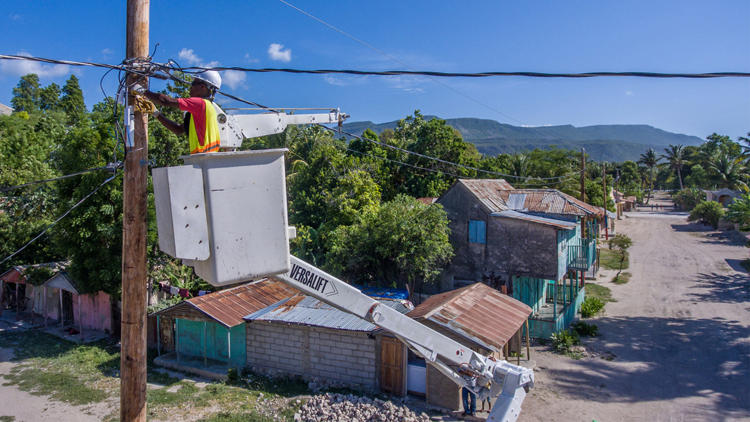
Register today!
Weekly Microgrid News Highlights October 26, 2016
NTU Singapore to build an offshore integrated system of renewable energy sources

NTU will be building the region’s first large-scale offshore microgrid system, which is already equipped with 3,000 square meters of photovoltaic panels already in operation. Credit: NTU Singapore
Nanyang Technological University (NTU Singapore) is building an offshore system that will integrate multiple renewable energy sources such as solar, wind, tidal, diesel, and power-to-gas technologies. The region’s first large-scale offshore power grid system, it will have four hybrid microgrids, occupying over 64,000 square meters of land or roughly about eight soccer fields. The system will be built at Semakau Landfill which is managed by the National Environment Agency (NEA). It will have over 3,000 square meters of photovoltaic (PV) panels, including energy storage systems that are already in operation.
Electric Motors Find New Roles in Robots, Ships, Cars, and Microgrids
James Kirtley, a professor in MIT’s Department of Electrical Engineering and Computer Science and in MIT’s Research Laboratory of Electronics, is thinking about the dynamics of motors connected to microgrids, improving their stability and making them work better. Kirtley says:. “We’re concerned about continuity of supply, which is especially important with microgrids supporting large server farms. You don’t want your system to be forced into an involuntary reboot simply because you had a glitch in the electric power supply. Electric motors can add more reliability.”
Anna University Tapping Resources to Power Indian Villages
Anna University (AU) is leading a research project, where villages can completely switch over to renewable sources of energy without any power cuts or disruptions. The project focuses on generating cool energy that will be stored. The source of power would be solar and wind energy. Besides electrifying homes and offices, the energy generated can be used to preserve dairy and food products in villages where air-conditioning facilities are inadequate.
In Haiti, A Startup Is Building 100% Renewable Grids For Towns With No Power

From FastCoexist.com
A year ago, no one living in Môle-Saint-Nicolas, Haiti, had electricity. By the spring of 2016, the town had a brand new grid, and it will soon run completely on solar and wind energy. In six months, Sigora International built from scratch the entire electrical grid of a town of 5,000 people. By the end of 2017, the company plans to get electricity to 300,000 people in throughout Haiti. By the end of 2018, they hope to reach a million people. After Hurricane Matthew, the company was able to restore power in 55 hours, long before the rest of the country.
More microgrid news October 26, 2016…
U.S. Explores Microgrid Tech as Viable Redundancy System
Microgrid Resources Coalition Urges Regulators to Value Energy Service, Not Source
Napa Valley Winery Installs Solar+Storage Microgrid
Vulcan Impact Investing Makes its Mark with Rural Kenya Solar Mini-grid
Check for frequent weekly microgrid news updates from HOMER Microgrid News & Insight.
